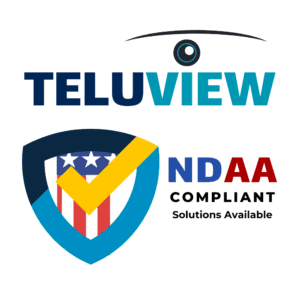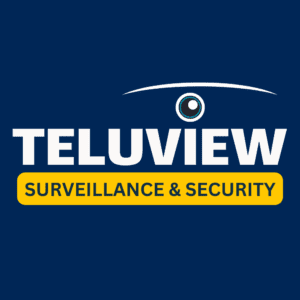NDAA Compliance FAQ
What does the NDAA stand for?
The NDAA stands for, The National Defense Authorization Act (NDAA),1Wikipedia – Article on the National Defense Authorization Act and represents a series of United States federal laws that outline the annual budget and expenditures for the Department of Defense. The first NDAA was enacted in 19612“History of the NDAA”. Archived from the original on December 22, 2018. Retrieved August 4, 2017. This act ensures that the U.S. Congress has the oversight necessary to manage defense spending and operations, primarily through two annual bills: the National Defense Authorization Act itself and defense appropriations bills.
The NDAA is under the jurisdiction of the Senate Armed Services Committee and the House Armed Services Committee. These committees are responsible for determining which agencies are tasked with defense, setting the recommended levels of funding, and establishing various policies related to national defense.
Throughout its history, the NDAA has been instrumental in shaping U.S. defense policy. For instance, the John S. McCain National Defense Authorization Act for Fiscal Year 2019 was named in honor of Senator John McCain, a war veteran, prisoner of war, long-term Senator, and Chairman of the Senate Armed Services Committee. This naming symbolizes the deep respect for McCain’s service and influence on national defense.
In addition to setting budgets, the NDAA has been used to address various policy concerns and introduce significant initiatives.3Williams, Lynn B.; Heitshusen, Valerie (November 28, 2016) – Defense Primer: Navigating the NDAA Each year’s act can carry different provisions and amendments debated extensively within the Armed Services Committees. For instance, the Carl Levin and Howard P. “Buck” McKeon National Defense Authorization Act for Fiscal Year 2015, named after two notable legislators, included numerous amendments and provisions aimed at enhancing U.S. defense capabilities.
Overall, the NDAA serves as a crucial legislative tool that not only manages the financial aspects of the Department of Defense but also sets strategic priorities and policies to ensure the nation’s defense infrastructure remains robust and responsive to emerging threats. Asyou can see, the question What does the NDAA stand for, is not as simple as it may seem at first.
How does the NDAA effect Security and Surveillance Installers?
When asking the question What does the NDAA stand for, it is important to also ask how it effects security professionals. The National Defense Authorization Act (NDAA) significantly impacts security and surveillance installers by imposing restrictions on certain foreign-made equipment, which can affect an installer’s decision of what hardware and software to install. Specifically, sections of the NDAA ban the use of equipment from companies like Huawei and ZTE, aiming to mitigate risks of espionage and ensure the integrity of national security systems. This requires installers to purchase products from NDAA-compliant manufacturers, often leading to changes in suppliers and potentially higher costs.
Need more information related to the question, “What does the NDAA stand for?” To read our full article on “Navigating NDAA Compliant Video Security Solutions“, click here.
Additional Resources
Article - What does the NDAA stand for?
Wikipedia – Article on the National Defense Authorization Act
Williams, Lynn B.; Heitshusen, Valerie (November 28, 2016) – Defense Primer: Navigating the NDAA
TeluView – Navigating NDAA Compliant Video Security Solutions
“History of the NDAA”. Archived from the original on December 22, 2018. Retrieved August 4, 2017.

Why Choose NDAA Compliant Solutions?
US Government & Contractor Sourcing
Evaluating security requirements for your next install? Consider the implications of the National Defense Authorization Act (NDAA) within the United States. This act delineates stringent criteria that surveillance equipment must satisfy to protect national security interests. The provisions therein specifically proscribe the acquisition and utilization of technological equipment from manufacturers identified as potential vectors for cybersecurity breaches.
When a security camera gets the NDAA compliant stamp, it’s a big deal. It means the folks who made it really went the extra mile to make sure everything from the circuits inside to the code that runs it all is up to snuff with some tough security rules.
If you are looking to sell or perform installs for the US Government, or anyone else who has to adhere to these rules, getting this compliance right is a must-do, not just a nice-to-have.
How to Select NDAA Compliant Equipment
Opting for NDAA-compliant equipment is imperative to avoid components identified by the act, such as HiSilicon chips from Huawei. TeluView offers a wide selection of NDAA-compliant equipment. Take the UniView Prime I series cameras, for example — UniView cameras are built with a lot of thought to make sure none of the parts come from places that the government’s given a thumbs-down. We put a lot of time into digging into the details and making sure everything’s by the book because, let’s face it, when you’re setting up cameras where the government’s involved, you’ve got to get it right.
If you would like a more comprehensive guide to NDAA Compliance, you can view our article: Navigating NDAA Compliant Security Cameras: A Comprehensive Guide
TeluView offers NDAA Compliant solutions from trusted brand partners like Axis Communications, UniView, and Wisenet. If you would like to view the full 2019 NDAA, click here.



